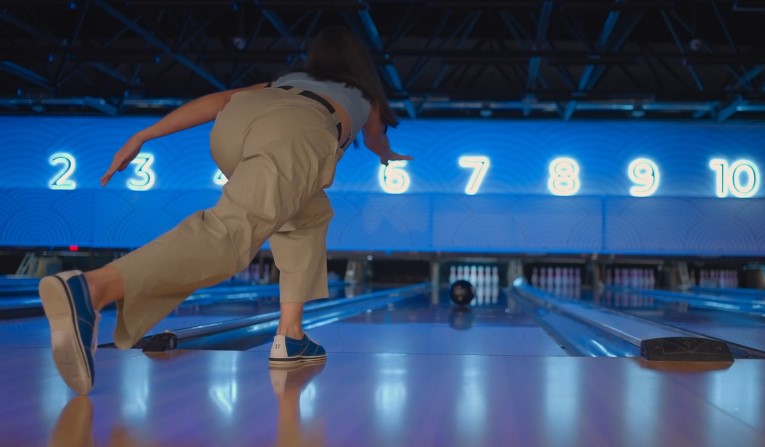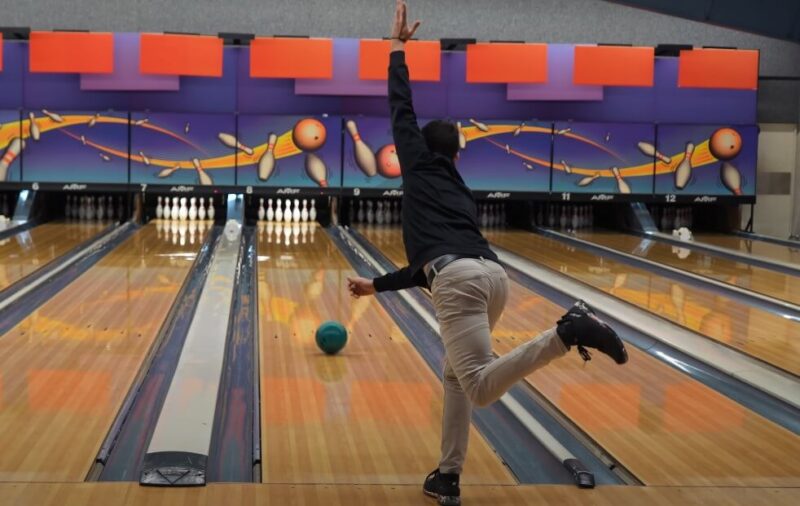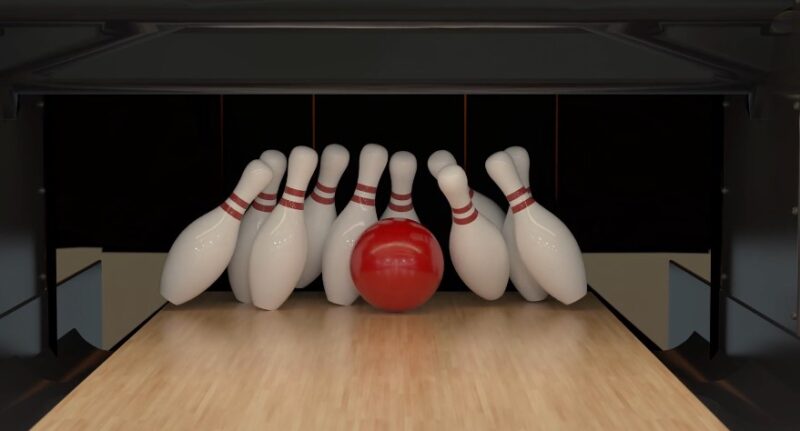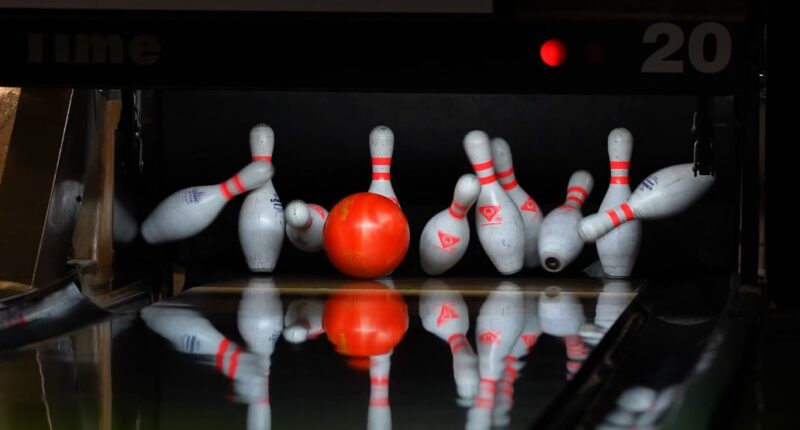Bowling. Some call it a sport, others insist it’s just a fun way to kill time on a Friday night with bad pizza and questionable shoe rentals. The debate has raged on for years, with purists on both sides arguing their case.
So, what is it? A sport demanding skill, strategy, and physical control? Or just a recreational activity anyone can casually pick up between sips of beer? Let’s get into it.
Key Highlights
- Bowling straddles the line between sport and leisure, as it requires skill and strategy but is also widely enjoyed casually. Yes, bowling is a sport.
- Competitive bowling meets traditional sport criteria, including physical effort, technique, rules, and professional leagues.
- Public perception varies, with media shaping its image as both a serious competition and a fun social activity.
The Essence of Sport vs. Pastime

Discussions about sport often circle around concepts like physical exertion, skill, competition, and rules. Bowling fits snugly into an activity governed by well-defined regulations.
Players work to knock down pins using a spherical ball, with a standard ten-frame sequence guiding the course of each game. Metrics such as ball weight, lane conditions, and pin configuration leave no room for guesswork about how the game should be played.
On the other hand, a pastime is sometimes viewed as an activity aimed at relaxation or pure amusement. Bowling alleys worldwide cater to casual groups who prefer laid-back games, cosmic lights, and maybe a slice of cake to celebrate someone’s birthday.
The same venue might host intense league nights or even regional tournaments. This dual function is a major factor that confuses many observers. Some see an athletic pursuit requiring strategy and skill, while others stroll in for an easygoing social activity free from strict demands.
Key Criteria for a Sport
Sporting pursuits are typically defined by:
- Physical Effort: The body must engage in tasks that require at least a modest level of exertion, such as coordination and stamina.
- Technical Skill: Competitors must hone methods and techniques to excel, suggesting repetition and practice.
- Established Rules: There is usually a framework that ensures fairness and structure.
- Competitive Element: Matches, tournaments, or leagues indicate a level of rivalry and ranking.
- Potential for Professional Involvement: Some participants dedicate themselves entirely, aiming for titles, prizes, and career recognition.
Traditional sports like soccer, basketball, or tennis match each criterion without much debate. They demand intense physical commitment, advanced techniques, global competitions, and well-known professional pathways.
Bowling stands out as an activity where all criteria can be present but vary widely from one setting to another.
So, Is Bowling a Sport?

Many bowlers spend years refining throw angles and release techniques. The mental aspect can be downright daunting if someone is aiming for consistent strikes and spares.
League or professional competition might demand repeated precision under pressure, including controlling nerves and managing grip. There is no shortage of data points to track: ball speed, oil patterns on the lane, rev rates, and more.
Such elements place bowling closer to commonly accepted sports. Yet, countless recreational players simply pick up a lighter ball on Saturday nights, chat with friends, and hope for a decent score.
That casual vibe sparks an argument from critics who see the lack of intense physical strain as a reason to label it a pure leisure pursuit.
Physical and Mental Factors
It’s easy to see people strolling into a bowling alley without any athletic gear apart from rented shoes. A skeptic might wonder if the only cardio involved occurs when walking back to the snack bar.
That viewpoint misses part of the picture. Bowlers who train seriously work on muscle conditioning to handle the weight of the ball, reduce strain on the wrist, and increase overall endurance.
Even moderate players notice that rolling a 14- to 16-pound ball multiple times in a game can challenge the arm and shoulder over extended frames.
Effort, Technique, and Consistency
Repetitive motion can take a toll on the body, especially if someone’s form is off. A graceful, well-balanced throw takes practice, and many who ignore proper technique risk minor injuries in the long run.
Coordinated footwork, timing the swing, and executing a fluid release demand a level of training that outsiders might overlook. At higher levels, professionals or dedicated amateurs meticulously adjust their approach and find ways to impart spin at perfect angles.
Key physical considerations include:
- Balance and Posture: A stable stance prevents wayward deliveries and helps aim the ball accurately.
- Strength: Stronger forearms, wrists, and shoulders enable control over ball speed and rotation.
- Endurance: Experienced league bowlers might play multiple games back to back without compromising form.
Strategic Element and Pressure
Games often hinge on mental concentration. The pace might appear slower than basketball or hockey, but the psychological challenge is significant. Consider how a bowler stands on the approach, takes a breath, and attempts to replicate a specific motion.
Feeling of pressure escalates if a perfect game is on the line or if an opponent just rolled a strike at a critical moment. Even small lapses in focus result in missed spares or dreaded gutter balls. The phrase “easier said than done” applies here in a big way.
Historical Roots and Evolution
View this post on Instagram
It helps to look at the game’s long timeline. Artifacts and records suggest variations of bowling have existed for millennia. Ancient Egyptians apparently tossed stones at objects resembling pins, and the concept appears in medieval Europe too.
German traditions included games with wooden pins outdoors, eventually morphing into the modern setup recognized today. The United States saw major growth in organized leagues during the late 19th and early 20th centuries.
Bowling centers popped up in cities, offering a blend of competition, socializing, and a change of pace from everyday routines. By the mid-1900s, professional tours and televised events like ABC’s Pro Bowlers Tour elevated the game’s status.
At that point, skill and competitiveness took center stage, though casual bowlers never disappeared.
From Ancient Games to Modern Alleys
- 5,000-Year-Old Origins: Artifacts indicate rolling objects toward targets in ancient cultures.
- European Influence: Various pin-based games in regions like Germany set the stage for modern rules.
- American Boom: Organized leagues and standardization of lane dimensions, ball composition, and scoring fueled mass appeal.
- Professional Evolution: The Professional Bowlers Association (PBA) shaped a structured competitive environment, complete with career pros and national tournaments.
Contemporary View and Public Perception

Mass media has always played a big part in shaping bowling’s identity. National television coverage in the 1960s increased mainstream awareness, creating household names out of stars who mastered strikes and spares.
Meanwhile, local leagues offered amateurs a chance to compete regularly, forging friendships and rivalries. Popularity ebbed and flowed over the decades.
An era arrived when younger audiences drifted toward other forms of entertainment, partly due to the rise of video games and the convenience of online social interaction.
Some bowling centers adapted by including arcades, laser tag, and even karaoke, positioning themselves as multi-purpose venues that appeal to a broader crowd.
How Media Shaped the Reputation
Coverage of major tournaments validated bowling as a competitive discipline. On the flipside, comedic scenes in TV shows and movies contributed to perceptions of the game as lighthearted.
Pop culture references often revolve around neon-lit lanes, junk food, and humorous mishaps that downplay any sense of athletic struggle.
The portrayal has been a double-edged sword: it popularized the pastime aspect but occasionally undermined the sporting rigor behind professional circuits.
A Place in Professional Competition
Organizations like the PBA set up a tour structure, complete with ranking systems, sponsorships, and large-scale championships. There is dedicated coaching, training regimens, and even specialized sports psychologists working with top-tier bowlers.
Such elements mirror the environment found in established sports like tennis or golf. However, acceptance in multi-sport global events has been an uphill climb.
Bowling’s exclusion from the Olympic Games underscores a debate regarding international popularity and physical intensity compared to other high-profile events.
Final Thoughts
Rolling a ball at pins can serve as a low-key activity for families, yet it also possesses enough technical demands to rank among legitimate sports. Fans who watch professional matches see athletes who have perfected their craft and handle immense competitive pressure.
Weekend hobbyists reap the rewards of social enjoyment without the sweat-inducing demands of more physically intense pursuits. That dual identity might never settle into one neat category, and maybe it shouldn’t.
The wide reach of bowling reflects its adaptability and capacity to satisfy both competitive souls and casual participants. It’s an outlet for top-tier professionals seeking perfection, and a stage for friends bonding over a friendly wager or two.
One might say it’s the best of both worlds, all rolled into a single game. And that is probably why people will keep debating, rolling, and cheering for many years to come.
